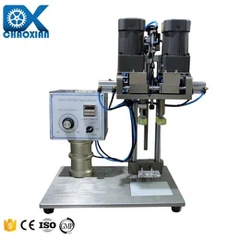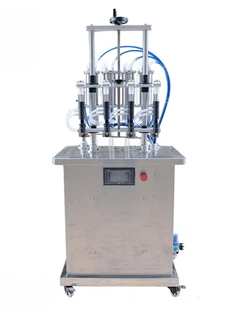Performance price and use of 18 inkjet inks part1
Oct 13, 2019
Leave a message
Performance price and use of 18 inkjet inks
Performance and use of 18 inkjet inks
Friends who often use and produce inkjet printers are sure to be familiar with the ink and ink (jet printer ink) of the printer. So, what kind of inks and varieties are there? Let me explain to you in detail, what kind of What kind of performance of ink and how to use it.
1 Polymer type inkjet ink 5 U
This is also a variety of composition changes, as usual is the following composition. As the conductive filler, a metal, a metal oxide, carbon black, graphite or the like is used. The binder uses natural substances and synthetic high molecules. Although it has a solvent-free type, it contains an organic solvent for maintaining mobility.
The internal dispersion of the filler, followed by the curing (or boring) of the binder to create a three-dimensional chain structure, is equivalent to the current flowing along its chain. The adhesion to the substrate is achieved by a binder, which allows the fillers to solidify and solidify each other, and has the discouragement of losing the pursuit of electrical conductivity. As described above, the organic matter remains on the final coating film, and the curing temperature is from ordinary temperature to 200 ° C. Therefore, the selection of the coating material is remarkable.
If the conductive filler exceeds a certain volume to match, when the coating film is formed, it will cause a confrontation in the grain field (even if it is not directly involved, it only needs to be very close, and the electrons will move due to the tunnel effect). The entire coating film is continuously formed as a conductor, and can be energized just like a conductor. Since the filler grain field has resistance, the conductivity is not necessarily limited, and the curing temperature is low, so that the substrate has a wide range of compliance.
2 low temperature curing type inkjet ink
The replacement of the elements is extremely strong and generally consists of the following components. A conductive filler (mostly a precious metal) and a glass powder (powder) are mixed and prepared by mixing a binder (polymer and an organic solvent). The treatment is carried out to a suitable viscosity to make a coded ink.
The film formation process is as follows. The screen film printed by screen printing is dried and then treated at a low temperature. The solvent and polymer evaporate during this process, causing fusion between the metal fillers. In the end, only the metal and glass components, that is, the inorganic components, are left in the coating film. The coating film is formed by the process of powder metallurgy, and the filler is fused to form an integrated compact metal film. The conductivity is completely extruded to the substrate side when the metal is blended, and is widely maintained at the substrate interface. The effect of adhesion.
In terms of electrical conductivity, it can exhibit high performance, but it is useless if it is not a high temperature resistant coating. Therefore, the target substrate is glass, ceramic, enamel, or the like.
3 Types of pad printing inks
The one-component inkjet ink can be used to insert the diluent to obtain the ideal printing viscosity. The drying method is physical evaporation type. Some thermoplastic substrates such as PS, PC, and PVC will have coarse dissolution, which causes the inkjet ink and the substrate to occur. Directly bonded, thus scratch-resistant, good adhesion.
The two-component inkjet ink has higher chemical resistance. Generally, the inkjet ink needs to participate in the hardener, but it is necessary to pay attention to the intervention before printing. If the participation time is too long, the result is not good. In addition, whether it can be completely dried depends on the temperature around it. It takes a few days to dry at room temperature of 20 °C, so do not develop the scratch and adhesion test too early.
The thermosetting inkjet ink is usually a two-component inkjet ink. The resin of this inkjet ink does not occur adjacent to room temperature, and only develops under low temperature conditions.
The oxidized inkjet ink reacts through air oxidation, and the general response speed is slow, which is 1 to 2 days under the premise of room temperature.
The transfer of the pad printing ink is mainly sent to the evaporation of the solvent, and the evaporation causes the ink film to be bonded, and the adhesion of the ink is adjusted. Good hiding power is achieved by transfer of the inkjet film layer.
In the UV inkjet ink, due to the short solvent, it is not possible to rotate the inkjet ink film layer. This kind of transfer is “water transfer” and the transfer is difficult. The application field of UV-curable inkjet inks is usually as high-quality pad printing. The length of the UV inkjet ink: the inkjet ink on the steel stencil is not dry; the quality is guaranteed; the steel stencil has less wear; the drying rate is fast; the solvent is not contained. Disadvantages of UV inkjet ink: high energy requirements, UV curing equipment is required; the application of clean rubber head is higher, the viscosity requirement is not as good as solvent inkjet ink; fine printing is not as good as solvent inkjet ink.
Water-based inkjet inks have not been used for pad printing. Due to the low yield, the drying speed, viscosity, adhesion, and evaporation rate are not as good as solvent-based inkjet inks.
4 anti-corrosive ink
Screen printing on metal appearance screen printing anti-corrosion inkjet ink, care for the parts that do not need to be etched, and then use the etchant to develop chemical conversion to the metal to reach the signs and patterns needed to produce on the metal surface. Application limitations are as follows:
1 Holding the etching base can decorate the metal skin phase, making the metal products more elegant, strong and applicable, rotating or simplifying the production of certain metal products, and lowering the production profit, such as making elevator decorative panels, building decoration materials, etc.;
2 operation of the etching base can also make rough molds, such as plastic suppression molds, printing ink, and the use of printing molds;
3 anti-corrosion ink ink oxidation label is a traditional work, it will still be widely used;
4 The domain of the past is called the printing line (electric) road board inkjet ink, the first is used to print the way board. The manufacturing process is: according to the design, the inkjet ink is printed on the appearance of the metal conductor (usually copper) sheet (which is attached to the insulator), and after the ink is dried, the ink is placed in the acid bath (the same as usual is ferric chloride). In the case of ammonium persulfate, the portion of the ink that has not been printed with ink is eroded away, and a part of the ink that is cherished by the ink is retained. After that, the inkjet ink is revoked with a mixed solvent, and at this time, a printing process board is completed.
Anti-erosion inkjet inks can be generally classified into four types: solvent-based resist inkjet inks, alkali-soluble resist inkjet inks, ultraviolet light-resistant inkjet inks, and infrared heat-curing oxidation-resistant inkjet inks.
The inkjet ink layer on the printed path plate must be dried in an oven at about 100 °C or with a red inner wire. The drying time is about 5 minutes to make the wax float on the appearance of the ink layer, thereby enhancing its oxidation resistance.
5 metal screen printing ink
The application for silk screen printing ink for metal signs is strong, good wear resistance, clear graphics after printing, fast drying and no sealing. Metallic screen printing inkjet inks are usually made of synthetic resins such as alkyd and phenolic, and are used in a small piece of pigments, additives, etc. This kind of inkjet ink has good printing performance, and it can be dried naturally after printing or baked at 120 °C for 2 hours. The ink film has a smooth appearance and a flat surface, and has excellent synergy with the aluminum plate. The ink film of this inkjet ink is developed with the JM-1 type paint film abrasion instrument. The rubber wheel with a load of 750g can be ground more than 500 times, and can be ground with a cloth wheel for more than 5,000 times.
If the screen is printed with a black label, refer to the relevant black-printed ink color sample for ink. Add excess varnish and desiccant when setting. The amount of inkjet ink desiccant is about 5%~8% of the total amount of inkjet ink. It is less easy to dry and add more, which affects the attachment force of the inkjet ink.
6 oxidative polymerization type inkjet ink
After the resin in such a coded ink is combined with oxygen in the atmosphere, an oxidative polymerization reaction occurs to form a coherent inkjet ink film.
The resin of this type of inkjet ink is mainly caused by linseed oil and various modified alkyd resins. The alkyd resin is used in the inkjet ink in the form of a prepolymer (both ends of the resin). The advantage of this inkjet ink is that the solvent element is less (20% to 30%), and the ink film has better brightness, heat resistance and oil resistance than the volatile dry inkjet ink; The ink film hardens, thereby increasing the adhesion. The disadvantage is that it is dry and slow at normal temperature, and if it is temporarily placed, the surface is easily oxidized and hardened, resulting in skinning. The oxidative polymerization rate of this type of inkjet ink is greatly affected by temperature, and it dries quickly in the case of high temperature and low humidity, and is slow in the case of low temperature and high humidity.
Send Inquiry





